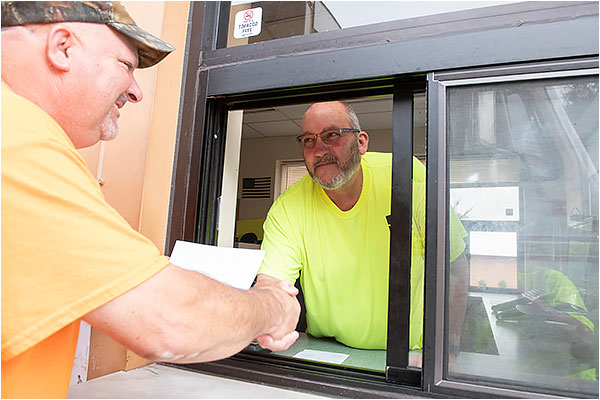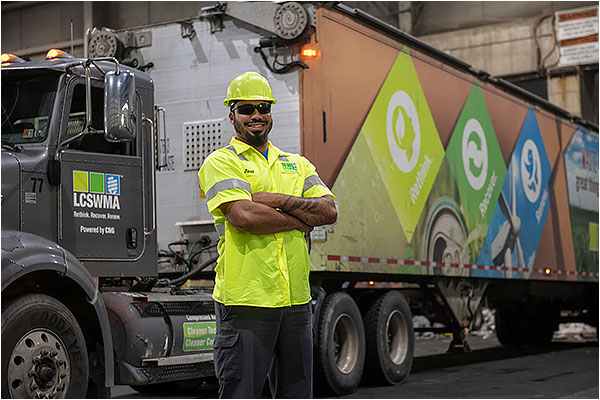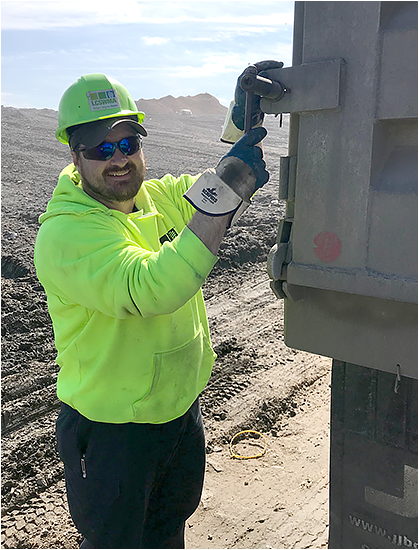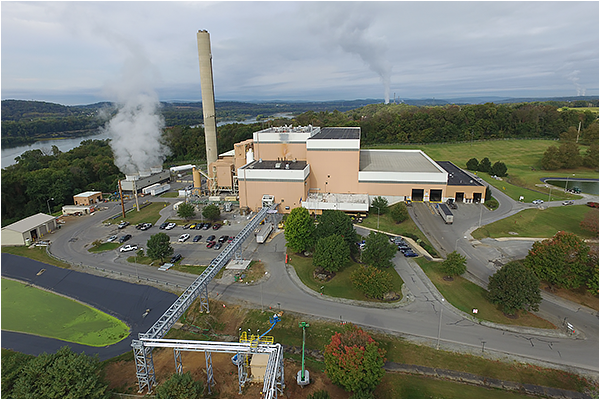LCSWMA - Waste to Energy - Virtual Tour

Welcome to LCSWMA’s Lancaster Waste-to-Energy (WTE) Facility virtual tour! To get started, click on the thumbnails below. For the best experience, we recommend clicking through the thumbnails in order from left to right. As you explore, you’ll notice a variety of buttons called “hotspots”. Click on the hotspot to access more information.

Welcome
This location includes 5 hotspots. Be sure to click on all of them. Click the arrow button at the bottom of the screen to advance to the next location.
Opened in 1991 and located in Conoy Township, the Lancaster WTE Facility is part of our larger Integrated System for managing waste, which helps to protect our environment and create clean, renewable energy.
The Lancaster WTE Facility offers 4 key benefits:
- Volume Reduction
- Energy Generation
- Recover and Recycle Metals
- Offset Greenhouse Gas Emissions
The Virtual Tour

Scalehouse
Find all 4 hotspots. Click the arrow in the bottom left corner of the screen to go back to the previous location or click the button in the bottom right corner of the screen to go to the next location.
Before entering the site, all vehicles must pass through radiation monitoring equipment to ensure no loads are carrying hazardous waste.
All vehicle traffic must pass over our scales when entering our facility and once again before leaving. The difference in vehicle weight determines the tipping fee or disposal fee. At LCSWMA, we generate revenue through our tipping fees, so no tax money is used to support our system.
On average, the Lancaster WTE Facility receives around 120 deliveries per day. Approximately 70% of the deliveries made to the Lancaster WTE Facility are LCSWMA’s own transfer trucks. Our transfer trucks bring in waste from the Transfer Station to be combusted at this facility.

Meet a LCSWMA Weighmaster
A LCSWMA Weighmaster is responsible for ensuring that all trucks are weighed-in at the facility in a safe manner, preventing unauthorized types of waste from being delivered to the site and directing customers to the appropriate drop-off area.In order to become a Weighmaster in Pennsylvania, one must obtain a Weighmaster License from the Department of Agriculture.

Tipping Floor
Find all 5 hotspots. Click the arrow in the bottom left corner of the screen to go back to the previous location or click the button in the bottom right corner of the screen to go to the next location.
Tractor trailers, garbage trucks, forklifts, and heavy equipment work together to keep the flow of trash moving.
LCSWMA staff direct traffic while visually inspecting waste loads for potentially harmful materials.

Meet a LCSWMA Truck Driver
LCSWMA truck drivers transfer waste between LCSWMA facilities and assigned destinations in a safe, efficient, and courteous manner.A Class A CDL is required for this position.

Waste Storage Pit
Find all 3 hotspots. Click the arrow in the bottom left corner of the screen to go back to the previous location or click the button in the bottom right corner of the screen to go to the next location.
A grapple mixes the trash in the pit and then feeds the material into one of three independent boilers.

Boiler Hallway
Find all 4 hotspots! Click the arrow in the bottom left corner of the screen to go back to the previous location or click the button in the bottom right corner of the screen to go to the next location.
The boilers burn waste between 1,800° and 2,200° Fahrenheit. It takes 2 to 3 hours for complete burn-out to occur. On average, the facility processes close to 400,000 tons annually.

Turbine Generator
Find all 3 hotspots! Click the arrow in the bottom left corner of the screen to go back to the previous location or click the button in the bottom right corner of the screen to go to the next location.
Water tubes surrounding each boiler generate steam during the combustion process. The steam is then piped to a turbine that is connected to a generator with a 36-megawatt capacity.
LCSWMA creates enough energy from burning garbage to power the equivalent of 30,000 Lancaster County homes each year.

Control Room
Find all 4 hotspots! Click the arrow in the bottom left corner of the screen to go back to the previous location or click the button in the bottom right corner of the screen to go to the next location.
Here in the Control Room, a specially-trained Covanta operator monitors the facility around-the-clock to ensure all mechanical and pollution-control systems are working correctly.

Ash Building
Find all 5 hotspots! Click the arrow in the bottom left corner of the screen to go back to the previous location or click the button in the bottom right corner of the screen to go to the next location.
This saves significant landfill capacity.
We also mine the ash for metals that are later recycled, while the remaining ash is used as daily cover at our landfill.

Meet a LCSWMA Ash Truck Driver
LCSWMA truck drivers transfer waste between LCSWMA facilities and assigned destinations in a safe, efficient, and courteous manner.A Class A CDL is required for this position.

Back-End of Plant
Find all 6 hotspots! Click the arrow in the bottom left corner of the screen to go back to the previous location or click the button in the bottom right corner of the screen to go to the next location.
- Pollution control processes
- The cooling tower that condenses steam and turns it back into water, and
- The switchyard, where the plant connects to the energy grid.
- Particulate matter is controlled through the baghouse.
- Nitrogen Oxide (NOx) is controlled by ammonia injection.
- Mercury and dioxin are controlled by activated carbon.
- Sulfur Dioxide and Hydrochloric Acid are controlled through lime slurry.

Perdue Integration
Find all 5 hotspots! Click the arrow in the bottom left corner of the screen to go back to the previous location or click the button in the bottom right corner of the screen to go to the next location.

The Utility Bridge
LCSWMA sends steam and process water to Perdue’s facility via the utility bridge.This facility processes approximately 17.5 million soybeans per year and produces soybean meal, soybean hulls, and soybean oil.
A utility bridge connects the facilities and allows LCSWMA to send steam and process water to Perdue.

End of Tour
You’ve completed the tour! Before you go, be sure to click on all 4 hotspots. Click the arrow in the bottom left corner of the screen to go back to the previous location. Thank you for joining us!